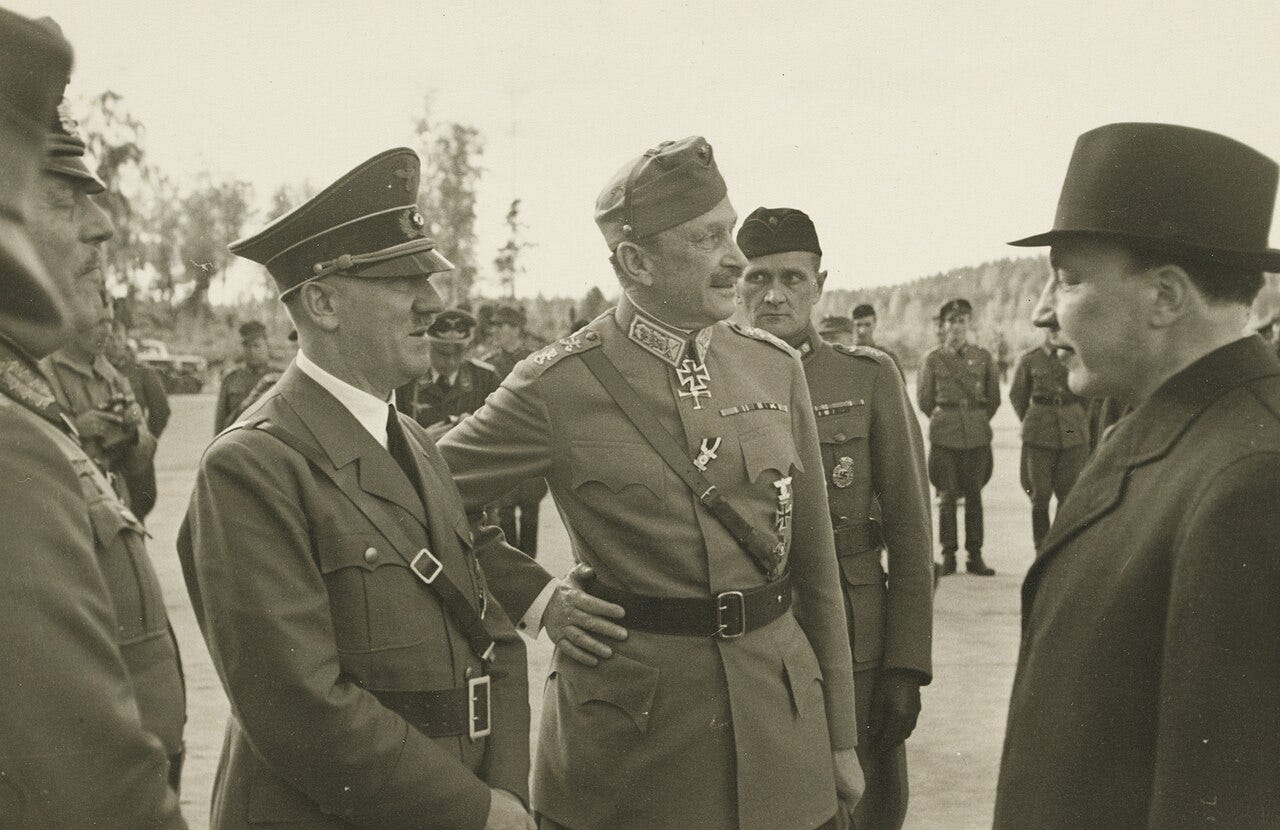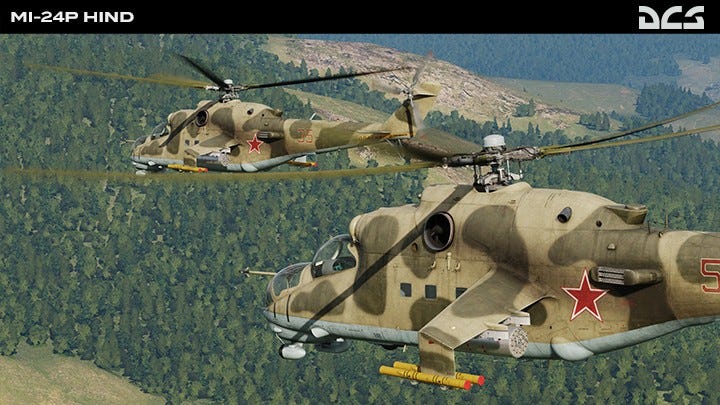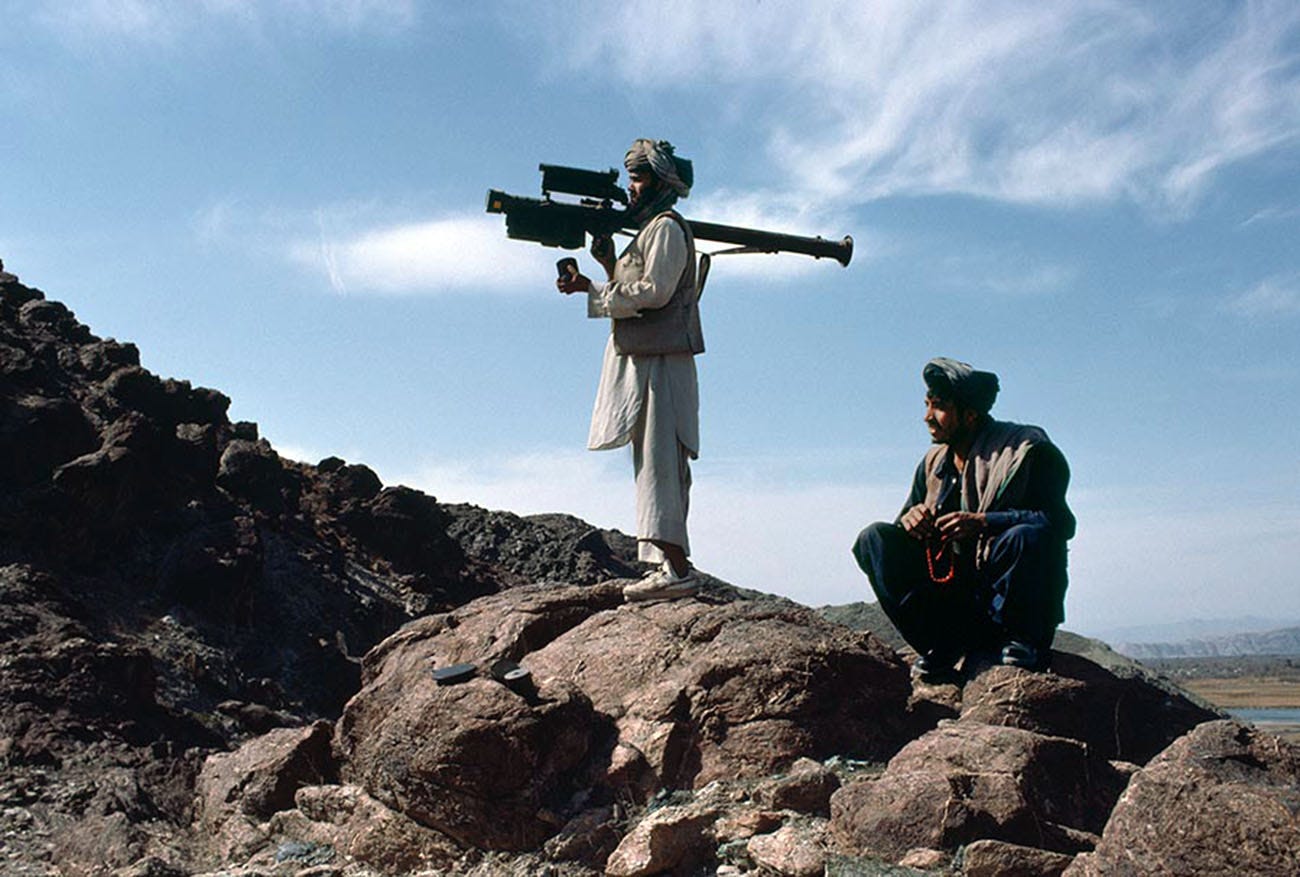Terminal Trajectories
Traced atop faded outlines of past wars, this cartography of collapse maps four endgames for Ukraine: unravelling alliances, imposed peace, grinding attrition or destabilizing technological shock.

Wars do not travel straight paths, nor do they die clean deaths. They fracture, they echo, they mutate—but within their chaos, history whispers patterns. Structures of collapse, uneasy settlements, and pyrrhic victories recur like motifs in a dark epic. As Ukraine’s war enters its third year, its possible endings blur: Will it dissolve into frozen stalemate? Shatter in sudden revolution? Be resolved at the negotiating table or by the arithmetic of attrition?
Today’s discourse drowns in advocacy. Pundits and partisans plead like prosecutors, their narratives polished for persuasion rather than understanding. But war is not a courtroom; it is an archaeological site. The task is not to argue, but to excavate—to trace the stratigraphy of past conflicts that lie beneath this one. Like a city’s subconscious footpaths worn between buildings, wars leave cognitive trails: compressed logics of exhaustion, political rupture, or negotiated surrender. These are not prophecies, but footprints in ash.
Policy, too, moves by such ghosts. Decisions are made with the tremor of half-remembered traumas—Vietnam’s quagmire, Munich’s appeasement, Versailles’ vindictive peace—their lessons misread but indelible. Ukraine’s war now inscribes itself onto history’s palimpsest, where every line is written over older scars. No conflict begins on blank parchment. Beneath the headlines of Bakhmut and Kherson lie the erased texts of Stalingrad, Verdun, and Gettysburg—their ink bleeding through the vellum of the present.
To read this war is to decipher layered script. In its jumbled margins, four recurring patterns emerge—each a possible terminus. Three trace variations of Russian success: the unspooling of Ukraine’s coalition, a politically imposed false peace, or the slow draining of resistance by attrition. The fourth, a jagged outlier: Russia’s own collapse, triggered by some as yet unforeseen technological spell, conjured in the West.
This is not prediction. It is cartography in negative space—a map drawn not by what remains, but by what has been burned away. The future takes shape in silhouette, its contours defined by the voids history leaves behind.
Scenario 1: WW1’s Western Front
By the summer of 1918, the Western Front had devolved into a desolate expanse of trenches, barbed wire, and unrelenting attrition. For four years, the Allies and Central Powers had engaged in a gruelling stalemate, with massive offensives yielding minimal territorial gains and staggering casualties. Then came the Hundred Days Offensive—a coordinated Allied assault that finally broke the deadlock.
A pivotal factor was the arrival of over two million fresh American troops, whose presence bolstered Allied morale and manpower. The German army, exhausted from years of warfare and their failed Spring Offensive, began to falter. However, the unravelling of the Central Powers was not solely due to battlefield defeats. The political and logistical underpinnings of their alliance started to crumble.
On September 29, 1918, Bulgaria signed the Armistice of Salonica, effectively exiting the war. This development threatened Germany's access to vital resources, including Romanian oil, which had been secured through the Treaty of Bucharest earlier that year. The loss of Bulgaria as an ally compromised supply lines and exposed the vulnerabilities of the Central Powers' interconnected war efforts.
Subsequently, the Ottoman Empire and Austro-Hungarian Empire sought armistices, leaving Germany isolated. Internal dissent grew, culminating in the Kiel mutiny on November 3, where German sailors refused orders, sparking widespread unrest. Facing revolution at home and collapse abroad, conservative German military leaders transferred power to liberal civilian authorities, who signed the Armistice of Compiègne on November 11, ending the war.
The Ukrainian Parallel: A Modern Hundred Days?
As in 1918, the war of 2025 may not end with a clean battlefield victory, but through the slow erosion of alliances, morale, and internal cohesion. In Ukraine, the conflict has settled into a grinding war of position—entrenched lines, fortified by attrition, with Russia advancing steadily, if unspectacularly. But beneath the hardened frontlines, deeper fractures are beginning to spread.
Since returning to office, President Trump has pushed consistently for an end to the war, engaging in back-channel negotiations with Moscow and signalling a desire to reduce America’s military footprint in Europe. With the U.S. stretched thin across multiple global flashpoints, a recent ceasefire deal with the Houthis underscores Washington’s intent to shed strategic burdens. The appetite to sustain the Ukrainian war effort is visibly waning.
This shift has exposed widening rifts within the Western coalition. In Europe, the prolonged costs of the war—economic, political, and social—are fuelling populist uprisings and scepticism toward continued aid. Some European leaders, unwilling to relent in their confrontation with Moscow, have escalated tensions in hopes the U.S. will once again intervene decisively—as it did in 1918. But Trump’s reluctance to deploy American forces has exposed Europe’s militaries as underfunded, overstretched, and ill-prepared to bear the burden in Ukraine alone.
Much like Germany’s weakening position as the Central Powers began to disintegrate, Ukraine now finds itself increasingly isolated within a fraying alliance. The transatlantic consensus is eroding under the weight of trade disputes, conflicting interests, and widening cultural rifts.
On the battlefield, Ukraine’s recent defeat in Kursk—reportedly involving 10,000 North Korean troops supporting Russian operations—recalls the failure of Germany’s 1918 Spring Offensive and the arrival of Pyongyang’s own version of the Doughboys. Russia has since launched its long-anticipated Spring 2025 offensive, making early territorial gains. In a surprising counterstroke, Ukraine has once again attempted to re-enter Kursk, echoing the desperate final thrusts of a coalition on the brink.
Meanwhile, political pressures mount in Kiev. Nationalist factions, already critical of President Zelensky’s leadership, grow increasingly hostile to any prospect of compromise. His 2022 decree banning negotiations with Putin remains legally binding, but should Western pressure force a reversal, nationalist militias—such as Azov, Aidar, and C14—may not tolerate any concessions. The threat of armed insurrection looms, recalling the Kiel Mutiny of 1918, when German sailors' revolt triggered broader collapse. The image of nationalist fighters marching on Kiev would mirror the final unraveling of Germany’s wartime order.
In this scenario, the war ends not with negotiated settlement or battlefield triumph, but with the disintegration of the coalition supporting Ukraine—externally and internally. As Western resolve crumbles and Kiev’s political consensus fractures, the front could give way suddenly. Russian forces, facing little coordinated resistance, could drive to the Dnieper in a modern reprise of the Allies’ Hundred Days triumphs.
Just as Germany's conservative elites handed power to liberals to absorb the blame for defeat, Ukraine’s international backers may prefer to see arch-nationalists in power when the armistice finally comes—allowing blame to fall on others while the Ukraine’s globalist political elite withdraws from a war it can no longer sustain.
Scenario 2: WW2’s Winter War in Finland
In the winter of 1939, the Soviet Union launched what it believed would be a brief and calculated campaign against Finland. The aim, as articulated by Stalin, was not conquest but security: to push the Finnish border back from Leningrad and secure a buffer against the growing threat of Nazi Germany. As British military historian Basil Liddell Hart explains in The History of the Second World War, Stalin’s initial demands were rational and limited—focused on securing the Gulf of Finland, adjusting borders near Murmansk, and pushing the frontier on the Karelian Isthmus beyond artillery range of Leningrad. In exchange, the Soviets offered Finland over twice the amount of land they were requesting, much of it designed to widen Finland’s strategic "waistline." Yet Finnish leaders, guided by national sentiment and a strict interpretation of neutrality, refused.
The war that followed—105 days of frostbitten brutality—saw the Red Army suffer staggering casualties against a vastly outnumbered but tactically nimble Finnish defense. Though the Soviets ultimately prevailed, forcing Finland to cede roughly 9% of its territory under the March 1940 Moscow Peace Treaty, they settled for far less than total victory. Drawing again from Liddell Hart, we see that the new Soviet demands—though harsher than those initially offered—remained relatively moderate, especially considering that the Red Army had broken through the Mannerheim Line and could have pushed further, easily able to conquer the entire nation. Stalin, facing the approach of a decisive spring in Europe and the heavy toll on his forces, opted for a strategic compromise rather than full occupation.
The Ukrainian Parallel: The Perils of a Premature Peace
Stalin’s softness towards the Finns demonstrates that limited victories can be illusions and peace can be short-sighted. Within a year, Finland aligned itself with Nazi Germany and took part in Operation Barbarossa and the siege of Leningrad—where, according to biographical accounts, Vladimir Putin’s infant brother died and his parents nearly perished. What had been a pragmatic Soviet peace in 1940 became, in retrospect, a grave strategic miscalculation.

Should Russia today accept a superficially generous peace—especially under President Trump’s pressure—it risks echoing the Soviet misjudgement of 1940. A deal brokered under Trump’s proposed terms, with Ukraine maintaining statehood and potentially rearming under the Western umbrella, could prove an unstable settlement. If Russia cedes the field too early, it may find, like Stalin did, that today’s peace breeds tomorrow’s peril.
A future Ukraine, embittered and heavily militarized, could align even more closely with NATO in the aftermath, just as Finland did with Nazi Germany. The territories that Russia might spare in the interest of diplomacy could become forward operating bases in a renewed confrontation. As in the Winter War, the challenge is not simply how a war ends—but whether the end prevents the next one.
Scenario Three: The U.S. Civil War
At the outset of the American Civil War, the Confederacy appeared resilient—even ascendant. Its generals—Lee, Jackson, and others—secured early victories against a larger but poorly organized Union force. With foreign arms—in particular Britain’s Enfield rifles—high morale, strong battlefield leadership, and effective internal propaganda, it managed to hold back the North far longer than many expected. Despite a smaller population and weaker industrial base, the South fought with intensity, betting that military prowess and political divisions in the North would force a negotiated settlement.
But as the war dragged on, the Union gradually mobilized its immense demographic and industrial advantages. It transitioned from seeking quick victories to a grinding war of attrition. Grant’s brutal campaigns in Virginia and Sherman’s devastating march through Georgia were not just tactical offensives—they aimed to break the Confederacy’s ability to sustain war. A tightening naval blockade strangled arms shipments and Southern trade. Inflation surged, morale withered, and by 1865 the Confederacy collapsed—undone by frontline losses, internal dissent, and the overwhelming weight of a larger, better-resourced adversary. The fire of secession gave way to fatigue and surrender.
The Ukrainian Parallel: Tactical Overperformance, Strategic Fatigue
Ukraine, like the Confederacy, has repeatedly outperformed expectations on the battlefield. With a flow of foreign arms—particularly German and American precision systems—high morale, strong military leadership, and flamboyant information warfare, it has held off a larger adversary far longer than many anticipated. Its early successes in Kiev, Kherson, and Kharkov recall the South’s victories at Bull Run and Chancellorsville: bold, morale-boosting, but ultimately insufficient to change the long-term balance of power.
Even Ukraine’s failed incursion into Kursk bears comparison to the Confederacy’s ill-fated Gettysburg campaign—an ambitious offensive across enemy lines that resulted in heavy casualties, depleted reserves, and little strategic gain.
If Russia maintains sustained military, economic, and diplomatic pressure, it will gradually erode Ukraine’s ability to resist. Once attrition dissolves the Ukrainian means to resist, a second phase, a knockout blow akin to Sherman’s March to the Sea, would focus on Ukraine's Black Sea coast, with Odessa as the strategic jewel. This would cripple Ukraine’s economy and logistics, delivering a devastating blow much like Sherman’s march severed the Confederacy’s heartland. Western enthusiasm for Ukraine is already fading as economic strains and political instability take their toll. With European publics growing sceptical of prolonged support, and a second Trump administration signalling increasing impatience to end what they view as a lost cause, the West’s resolve is sinking.
In this US Civil War scenario, following Ukraine's crushing defeat, Moscow would likely initiate a cultural and ideological "reconstruction" effort in Ukraine, aimed at reabsorbing the country into the broader "Russian World." This would involve dismantling what Russia views as the ideological infrastructure of anti-Russian nationalism. In a manner similar to the U.S. post-Civil War Reconstruction, which sought to integrate freed slaves into a reformed South, a Russian version would focus on empowering Ukraine’s long-marginalized Russian-speaking populations, ensuring their greater influence in shaping the country’s future.
The ideological parallel is striking. Just as the Confederacy was driven by an exclusionary and revanchist vision, Russia frames Ukraine’s resistance as propelled by ultra-nationalism, anti-Russian hatred, and a Western-backed campaign of geopolitical encroachment. From Moscow’s perspective, this is a slow-motion form of Lebensraum: a creeping NATO-led advance designed to encircle and destabilize Russia, ultimately aiming at regime change in Moscow and the installation of a compliant, pro-Western, anti-Chinese leadership.
Scenario Four: The Soviets in Afghanistan
The Soviet-Afghan War (1979–1989) began as a confident assertion of Soviet power. The Red Army entered Afghanistan with overwhelming force, and for several years maintained total air dominance. Their arsenal included the feared Mi-24 “Hind” helicopter gunship—essentially a flying tank—that patrolled the mountains with impunity, devastating mujahideen positions and convoys. Supported by SU-25 ground attack aircraft and MiG-23 fighter jets, Soviet forces could strike anywhere, anytime. Resistance fighters were pinned down not just by ground pressure, but by a sky they did not control.
That changed in 1986 with the introduction of the FIM-92 Stinger missile. Supplied by the United States and funnelled through a broad anti-Soviet coalition that included Saudi Arabia, Pakistan, and even China, the Stinger was a shoulder-fired, heat-seeking missile that gave guerrillas the power to shoot Soviet helicopters out of the sky. Within months, over 250 aircraft had been downed. Soviet pilots began flying higher and with less aggression. The sky was no longer theirs.
The psychological and operational shift was profound. What had been a slow-burning counterinsurgency suddenly became untenable. Though the Soviets would linger for a few more years, the strategic die was cast. By 1989, under pressure at home and abroad, the Red Army withdrew. It was the beginning of the end for the Soviet empire.
The Ukrainian Parallel: A New Game-Changer?
The Soviet defeat in Afghanistan and the resulting regime change in the Kremlin are no doubt the historical etchings that Western hardliners are focussed on and drives their insatiable desire to continue the war.
Could Ukraine experience a repeat of the asymmetric turning point of the 1980s? Perhaps. Since 2022, the Ukrainian military has impressed with its resilience and adaptability. Yet, despite tactical innovations, the frontlines continue to shift in Russia’s favour. Russia’s overwhelming superiority in manpower, firepower, and drone capabilities—including advanced fibre-optic cable drones that are immune to electronic warfare—have blunted Ukraine’s offensives and forced Kiev onto the defensive.
However, we are living in an era of rapid technological transformation. What if a truly disruptive breakthrough emerged? A "wonder weapon" capable of reshaping the combat zone as dramatically as the Stinger did in the 1980s?
This could take many forms. Some speculate that artificial intelligence might radically optimize targeting, logistics, or reconnaissance. Others point to firms like Palantir, now actively assisting Ukraine, whose AI-enabled battlefield tools could unlock powerful synergies. Such systems might significantly enhance the kill chain efficiency—linking sensors to shooters within seconds, autonomously detecting Russian troop movements, and orchestrating drone swarms in real time. If successful, this could transform combat into something resembling a software-directed kill web, where code dictates the action.
Moreover, hard-line Ukrainian militias are attempting to emulate the anti-Soviet mujahideen's strategy by recruiting foreign volunteers. Ideologically motivated brigades like the Azov Battalion are tapping into a global network of supporters. Their efforts to enlist “Nordic” and “white” foreign fighters mirror the foreign Islamist influx into Afghanistan—both driven by ideological fervour and a willingness to die for their cause.
That said, this scenario remains highly unlikely. Many observers argue that Palantir’s impact is more hype than reality. In fact, it is Russia that has outpaced the West in technological innovation, with dominance in electronic warfare, drones, and hypersonic missiles, not to mention their cutting-edge Oreshnik missile system.
Reading What Remains
We live atop layers we cannot read. A highway follows the path of a Roman road. A church is built where a temple once stood. A nation’s borders trace the graves of kingdoms it no longer remembers. The past is not dead; it waits just beneath the surface, pressing upward like ink bleeding through parchment.
In medieval churchyards, weathered markers were often repurposed, the old epitaphs faintly visible beneath newly carved names. War cemeteries bear the same palimpsest. In Flanders, some gravestones mark two deaths—one from 1914, another from 1940—as if the earth, exhausted by slaughter, had ceased to distinguish between its victims.
South of Brussels, the ring road runs straight for miles—calm, unbending—diverted from its natural arc by affluent suburbs, making a beeline toward ground with less power to resist its passage. But when it finally curves, it is not to seize an opportunity to traverse the margins, but to accommodate memory. It bends to skirt the preserved battlefields of Waterloo, where the Lion’s Mound rises from the plain to mark the place where empires cracked and Europe held its breath. Here, Napoleon’s terminal trajectory met the immovable terrain of history. Even the motorway yields to memory—its concrete arc bending around scarred ground, as if not to wake the ghosts still pacing beneath the soil.
Wars do not end; they are rewritten. Layer upon layer, old violence seeps into the parchment of the present, staining each new conflict with the residue of the past.
History does not repeat, but it maps. Yesterday’s wars are not prophecies—they are cognitive shortcuts, half-erased trails scribbled in the margins of time. No one can read these overwritten manuscripts in full; we glimpse only fragments, like scholars squinting at a vellum page scraped thin and inscribed anew—its older lines still faintly visible beneath the fresh. Yet from these fragments, we trace the contours of what may come—not to predict, but to recognize.
The future will surprise us. It always does. But by studying the scars of the past—the hollows where empires collapsed, the fissures where revolutions began—we begin to see the terrain ahead. Not the destination, but the path. Not the ending, but the echoes that will one day lead us there.






The difference was that the plan was ever always only for the United States to ride to the rescue.
Excellent parallels! Very insightful.